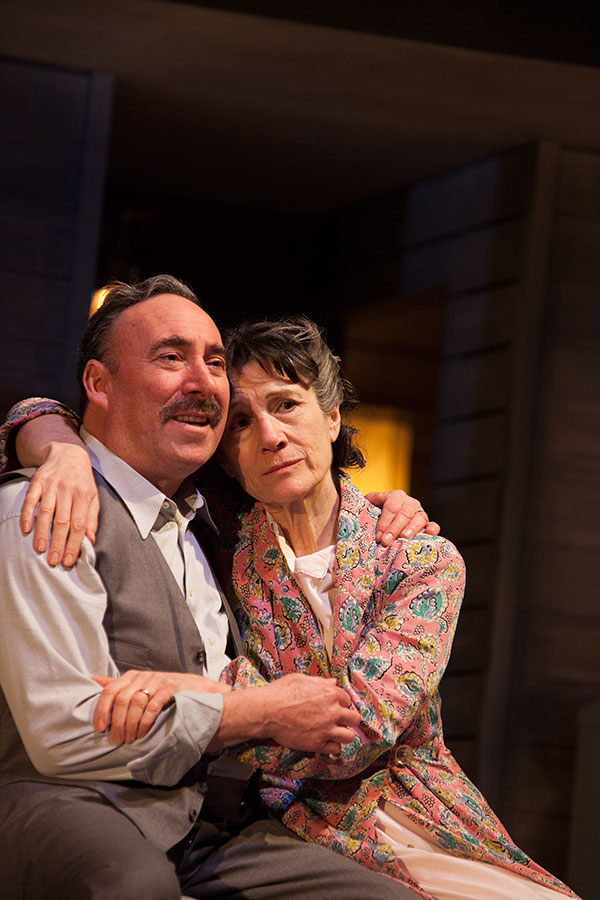2015 marks the centenary of Arthur Miller’s birth and the RSC has honoured it with a near definitive account of what is probably Miller’s finest play – Death of a Salesman. Miller’s powerful, painful take on the elusive Great American Dream is not easy to bring off on stage but Gregory Doran’s characteristically assured touch points up all the detail and reminds us how topical many of Miller’s lines still are. And, of course, with Antony Sher as Willy Loman, Harriet Walter as Linda and Alex Hassell as Biff, the talent on stage is also quite a combination.
Sher uses a gravelly voice with quite slow enunciation so that the American accent never gets in the way of clarity. He clumps about shifting in an instant from brittle elation to fury and despair with all the volatility of a damaged personality in crisis. Willy Loman irritates everyone he deals with but Sher evokes terrific sympathy for a tragic, deluded character in whose family, as Biff eventually declares, no one has ever told the truth for 10 minutes. Being a second rate salesman on commission is not a noble calling. Loman, a creative man who’s good with his hands, should have been a carpenter or gardener and Sher creates real pathos in the seed planting scene. And the sacking in Howard Wagner’s office (Tobias Beer is good as Wagner) is as moving as anything I’ve seen on stage for a long time. It’s a huge part because Loman is rarely off stage for three hours but Sher never disappoints.
Walter can drop 25 years for the flashbacks and then put them on again simply by the way she moves her body. Her Linda is careworn and troubled but desperately denying reality and trying to be cheerful. Walter exudes stressed anguish. And her solo coda which ends the play is a masterclass in dignity and mood change.
Hassell’s Biff is full of bluster at the beginning, as the role requires, gradually darkening into a deeply troubled, angry young man looking for a way of salvaging a life blighted by his father’s inadequacies. The Boston hotel room scene when he catches his father with a woman is both searing and pitiful – one of the more successful flashback scenes. Less effective, I think, are the always tricky scenes in which Willy conjures up the ghostly Ben, his successful brother whose example he failed to follow although Tom Mitchell’s lighting ensures a change of mood for the flashbacks, underpinned by Paul Englishby’s (live) music.
If you’re teaching this play your group would certainly benefit from seeing this fine staging of it. Some of the theatrical ideas – split level staging and use of effects – have a lot to offer to Theatre Studies groups too.
IMAGE: Ellie Kurttz
Review by Susan Elkin



